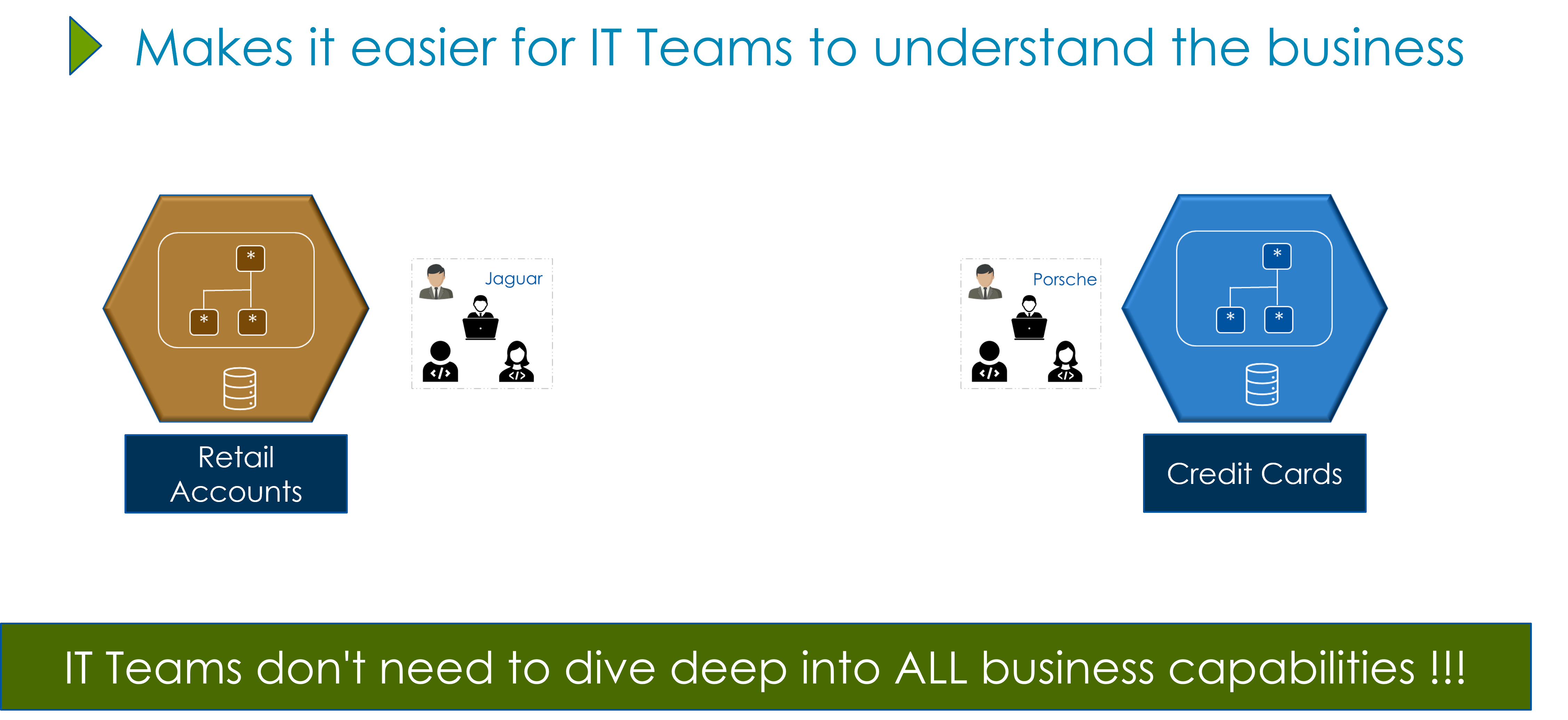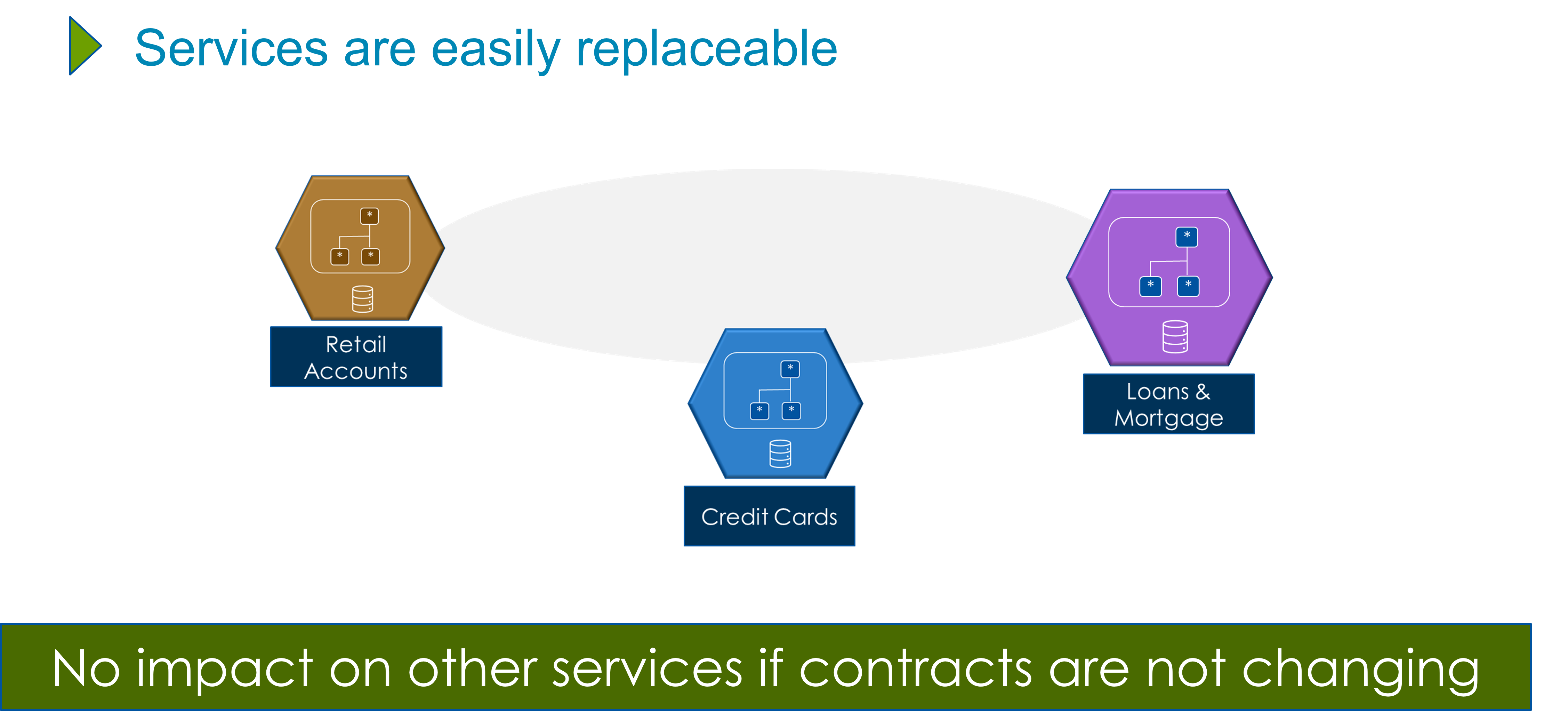Capability mapping
Microservices teams
Each Microservice is built & operated by a small team. The size of the team is between 8 and 10. These teams are sometimes referred to as 2-pizza-teams.
“We try to create teams that are no larger than can be fed by two pizzas; we call that the two-pizza team rule” - said Bezos
Small team size enables better collaboration among the team members. It leads to better outcomes:
- Frequent Software Releases
- Faster response to changes in business
- Tech becomes a competitive edge
Business capabilities
Recall that Microservices are organized around business capabilities. Each microservice team owns their own service and need to have thorough understanding of their domain. Here are the benefits of this approach:



Advantages of capability mapping
It is a MUST that Microservices are mapped to business capabilities. NOT doing so will lead to achieving lower advantage of adopting microservices architecture.
- Faster response to changes i.e., better agility
- Easier to build and maintain
- Improved productivity & quality
- Services are replaceable with zero | minimal impact
Capability mapping process
This is where Domain Driven Design comes into picture. The idea of DDD is to de-marcate the boundary around business capabilities in a domain. The areas within a boundary is referred to as Bounded context. Each Bounded context is then mapped to one or more microservices. We will dive deep into it as we will progress through the course.